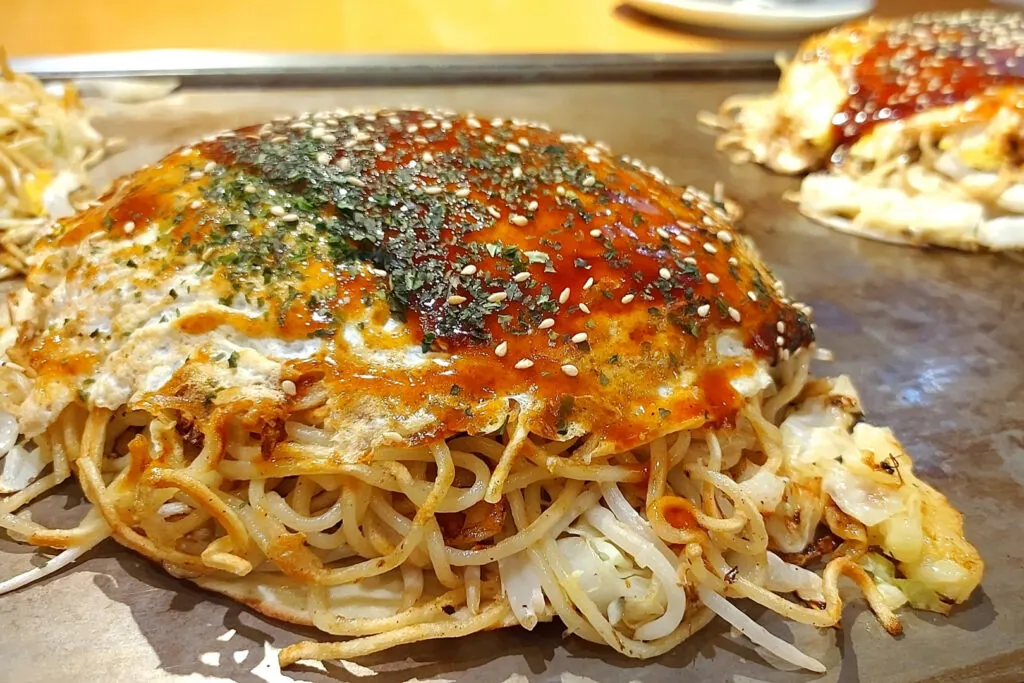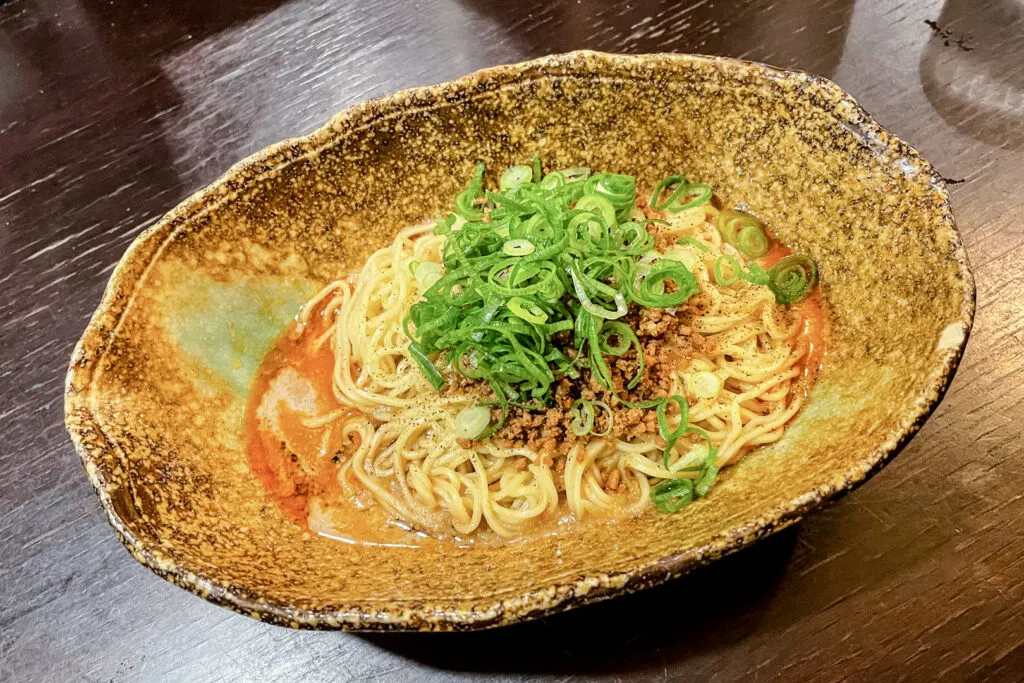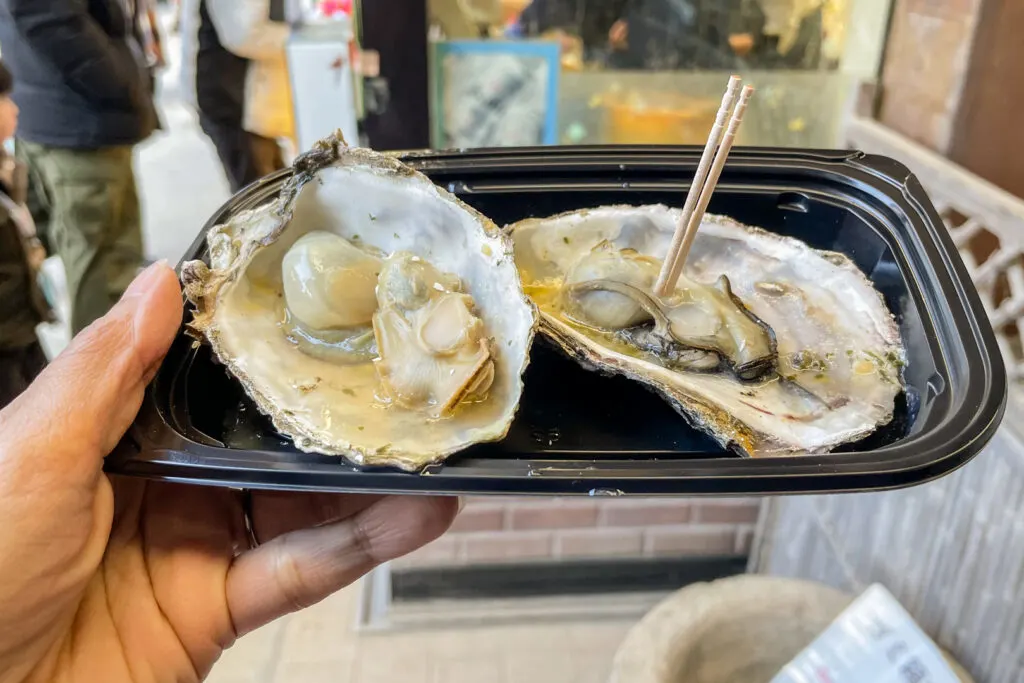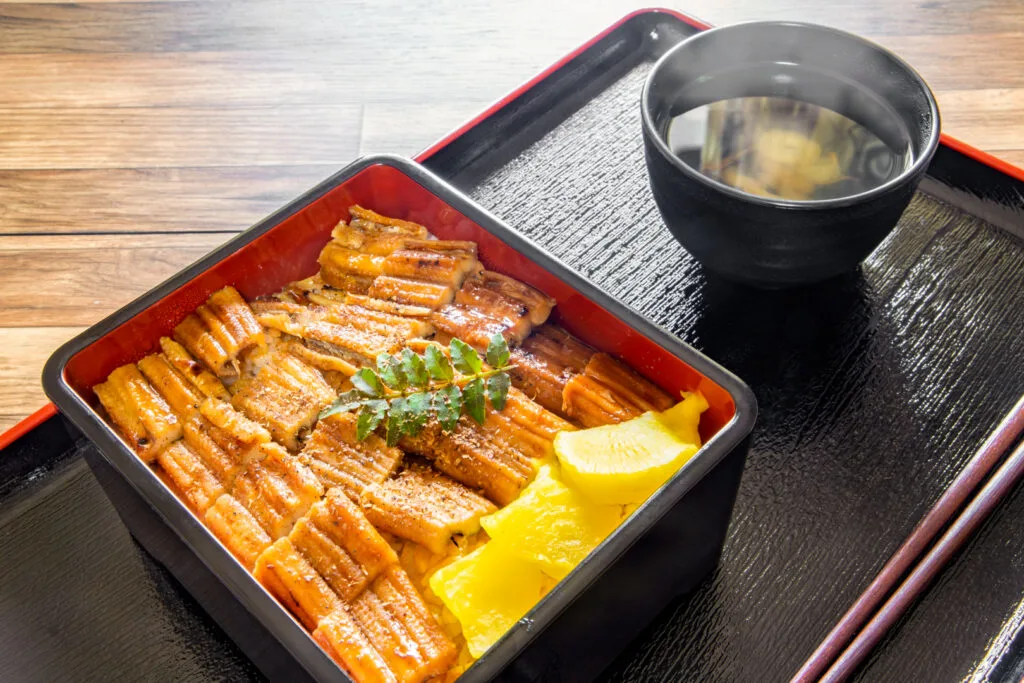Hiroshima is a must-visit prefecture in the Chūgoku region that beautifully blends both modern and traditional Japan. As it borders the Seto Inland Sea, it’s famous throughout the country for its majestic views, as well as its amazing local food.
I used to live right next to this prefecture and even after a decade of experiencing life in other areas of Japan, I still find the food in Hiroshima to be one of the most memorable. Now, thanks to having a spouse from this prefecture, I’m lucky enough to have the opportunity to enjoy the variety of food here at least once a year while taking in the stunning green mountains and sparkling sea.
In this guide, I’ll share highly-rated Hiroshima food specialties that both Hiroshima locals and tourists alike love to eat, as well as sightseeing spots where you can enjoy delicious food and a view. Everything in this article is information I wish I had known when I first lived in the Chūgoku region over a decade ago!
Table of Contents
Okonomiyaki (お好み焼き, おこのみやき)
Okonomiyaki is akin to a savory pancake and there are two different kinds — Kansai style (関西風お好み焼き, かんさいふうおこのみやき) and Hiroshima style (広島風お好み焼き, ひろしまふうおこのみやき). Unlike Kansai-style okonomiyaki, where all the ingredients are mixed together before being fried, Hiroshima style’s ingredients are layered, starting with a thin layer of batter cooked on a teppan, or iron griddle. This is then covered with a generous heaping of cabbage, some toppings, and a few pork slices before being flipped over. Meanwhile, a round portion of yakisoba is fried next to this.
Once the cabbage has cooked and reduced in volume, everything is moved skilfully right on top of the yakisoba before being moved onto an egg omelet and flipped one last time. The top is drizzled with okonomiyaki sauce and a sprinkling of aonori seaweed (青のり, あおのり) and dried bonito fish flakes (katsuobushi, 鰹節, かつおぶし).

Nothing quite hits the spot like Hiroshima-style okonomiyaki and this is especially true when it comes to having this dish in its hometown. If you’ve never been to Hiroshima before, you’ll want to head to Okonomimura (お好み村, おこのみむら), which is located on the main shopping street, Hondōri, in Hiroshima city. This building contains several floors of stalls serving Hiroshima-style okonomiyaki as well as other teppan dishes. The atmosphere alone is something to be experienced!
Shiru Nashi Tantanmen (汁なし坦々麺, しるなしたんたんめん)
Tantanmen (坦々麺, たんたんめん) is a Japanese noodle dish based on Sichuan Dandan noodles and contains stir-fried ground pork and a rich and creamy broth (called shiru in Japanese, 汁, しる) consisting of spices and sesame paste. However, Hiroshima is known for a brothless or shiru nashi (汁なし, しるなし) version in which the noodles are served in a sauce.

The bowl of noodles is typically topped with plenty of ground meat and green onion. Diners are expected to mix everything thoroughly to ensure that the noodles are fully coated with the sauce. After that, they try the noodles, add some condiments like vinegar, sauce, or chili flakes if necessary, and adjust as they go to experience different flavors in one dish.
Not a fan of spicy dishes? There’s no need to worry. You can choose the spice level to make it as mild or as spicy as you want.
If you’re interested in trying Shiru Nashi Tantanmen, I suggest heading to Kunimatsu (くにまつ), or if you’re out late, Kunimatsu Nagarekawa (くにまつ流川店), both located in Hiroshima city.
Oysters (かき)
As Hiroshima is located along the Seto Inland Sea, it’s no surprise that the seafood is fresh and delicious, in particular the oyster. Oysters, which are called kaki (かき) in Japanese, are found at various restaurants and cities throughout Hiroshima, but for the best experience, head to Miyajima, specifically Itsukushima.
Itsukushima is an island located a few minutes by ferry from Miyajima Station. It’s one of the three most famous scenic spots in Japan, called Nihonsankei (日本三景, にほんさんけい) as its views of Itsukushima Shrine and its world-famous famous torii gate on the water are absolutely breathtaking. While taking in the sights, you can also try various delicious snacks, notably oysters, at one of the many stalls on the island.

There are several ways you can enjoy oysters on Miyajima, such as deep-fried, steamed, grilled, or on top of okonomiyaki. I recommend having it grilled, called yakigaki (焼きがき, やきがき), as it’s both picture-worthy and tastes fantastic. You can try different sauces on top of your oyster as well, such as ponzu, soy sauce and butter, and my personal favorite, garlic and butter. Don’t forget to drink the sauce directly from the shell after you’ve had the oysters!
If you haven’t had an oyster before or haven’t had it for a while, it’s probably best to limit yourself to one as it may upset your stomach or you might have an allergic reaction.
Grilled Conger Eel (穴子, あなご)
Now, I am going to admit that I am not fond of eel, but I thought it should be included on this list as it is a specialty food in Hiroshima due to its abundance in Miyajima. The area is a rich aquatic food web where crab, small fish and shrimp are attracted to areas where oysters are farmed, which then attract conger eel in search of food.
Conger eel is served in many forms in Hiroshima but the most common is grilled seawater conger eel (anago) with a sweet sauce served on top of rice.

Fun fact — in Japan, it’s believed that having eel helps give you the stamina to combat the heat. But this doesn’t mean people don’t enjoy it throughout the year, so if you’re in Hiroshima and would fancy some eel, make sure to give it a try!
Momiji Manju (もみじ饅頭, もみじまんじゅう)
In Hiroshima, you’re likely to see small brown cakes that are shaped like maple leaves at almost every souvenir shop. These are called Momiji Manju (momiji manjū) and are unique to Hiroshima as maple leaves are a symbol of the prefecture.

Manju (饅頭, まんじゅう, manjū) is a Japanese confectionary consisting of steamed dough and typically filled with either a smooth sweet red bean paste called koshian (こしあん) or a mashed sweet red bean paste called tsubuan (つぶあん). Momiji Manju, however, is more cake-like in terms of its dough and how it’s made as it’s baked in an iron mold.
One of the best things about Momiji Manju is that there are a variety of fillings to choose from, such as cream, chocolate, lemon, matcha, and of course classic red bean paste.
There are also many ways to enjoy Momiji Manju, especially if you head to Itsukushima in Miyajima. Try it with ice cream, in a pie, or — my personal favorite — age momiji (揚げもみじ、あげもみじ), which is deep-fried Momiji Manju served on a stick. I love the textures of the crispy outside, soft cake inside, and then the hot and melty filling.


Onomichi Ramen (尾道ラーメン, おのみちらーめん)
Onomichi Ramen is hands-down the best kind of ramen I have had in Japan so far. The thin noodles have the perfect bite to them and the soy sauce-based broth, made of both pork fat and local fish, is heavenly.
As the name indicates, you’ll need to head to Onomichi, a coastal town east of Hiroshima city, to try this ramen. It takes about an hour to get there by train or car, but it’s worth the trip when considering the food and sightseeing spots, both of which I’ll talk more about later.
There are a number of restaurants that serve Onomichi Ramen but my recommendation is Tonchinkan (東珍康), which is my husband’s favorite. He grew up eating Onomichi Ramen (and still gets sent care packages from his mother containing boxes of it), so it has a local’s seal of approval.
What I especially like about the ramen from this restaurant is that the broth doesn’t taste fishy at all and isn’t too oily. You can also choose between a regular-sized bowl, called nami (並, なみ), or a small-sized bowl (shō, 小, しょう), so it’s great if you don’t want to eat too much or have small kids to feed. Make sure to try their gyōza and fried rice as well!

Setouchi Lemons (瀬戸内レモン, せとうちれもん)
You can’t visit Hiroshima without trying a dish or dessert featuring their lemons, known as Setouchi Lemons. These lemons are mostly grown on Ikuchi Island, which is part of Onomichi, and the mild climate of the Seto Inland Sea is perfect for cultivating juicy and refreshing, not to mention gorgeous-looking, lemons.
The farmers are also very meticulous and dedicated to their work so it’s no wonder that these lemons are used by restaurants and patisseries throughout Japan. In fact, Hiroshima prefecture is the largest producer of lemons in the country!

One can enjoy the taste of these lemons in so many ways, such as in pasta, gelato, drinks, puddings, cakes, and even in Momiji Manju. I picked up a Hiroshima Lemon Gin Salty Cider from a bar called GEBURA the last time I was in Miyajima and it was absolutely worth the price.
I also love the Setouchi Lemon Cheese Pudding Cake, which consists of a layer of vanilla cake, a generous amount of pudding, and then a lemon glaze. The balance of sweet and a little bit of sour, as well as the different textures, is perfect. This cake can be found in souvenir shops but needs to be refrigerated.

Hassaku (八朔, はっさく)
Alongside lemons, hassaku is another popularly grown fruit in Hiroshima. Hassaku is a citrus fruit that resembles an orange in both appearance and taste. However, it has more of a sour and bitter aftertaste, almost like a mix between a lemon and an orange.
It’s served in various forms, such as daifuku mochi rice cakes, pudding, ice cream, jelly, and juice, and can be found in many tourist spots throughout the prefecture.

If you’re interested in trying it, I suggest heading to Onomichi, specifically Senkō-ji (千光寺, せんこうじ), a famous Buddhist temple and one of 25 temples that make up the area’s Temple Walk.
Take the ropeway from Onomichi Station up to the Senkō-ji Park Observatory where there’s a small tourist shop and a long, wide spiral staircase. Here you can try hassaku or lemon, or both, as a drink or ice cream. There are also different souvenirs for sale, such as hassaku and lemon puddings, and cakes.

After enjoying your citrus treat, climb up the staircase to take in the stunning view of the city and Seto Inland Sea. Head down and then make your way to Senkō-ji Temple, which is famous for lovers. The temple also has a giant rope of beads resembling Buddhist prayer beads, which you pull through a wheel when you pray.
Do you have plans to visit Hiroshima? What Hiroshima food or drink would you like to try first?
Pin me for later

Kay is a Canadian freelance translator and writer who has been in Japan for more than a decade. Having lived in the Chugoku, Kanto, and now the Kansai regions, she hopes to share their various local cuisine on JFG.
She also writes about her experiences being a mother in Japan on her website, Tiny Tot in Tokyo.
